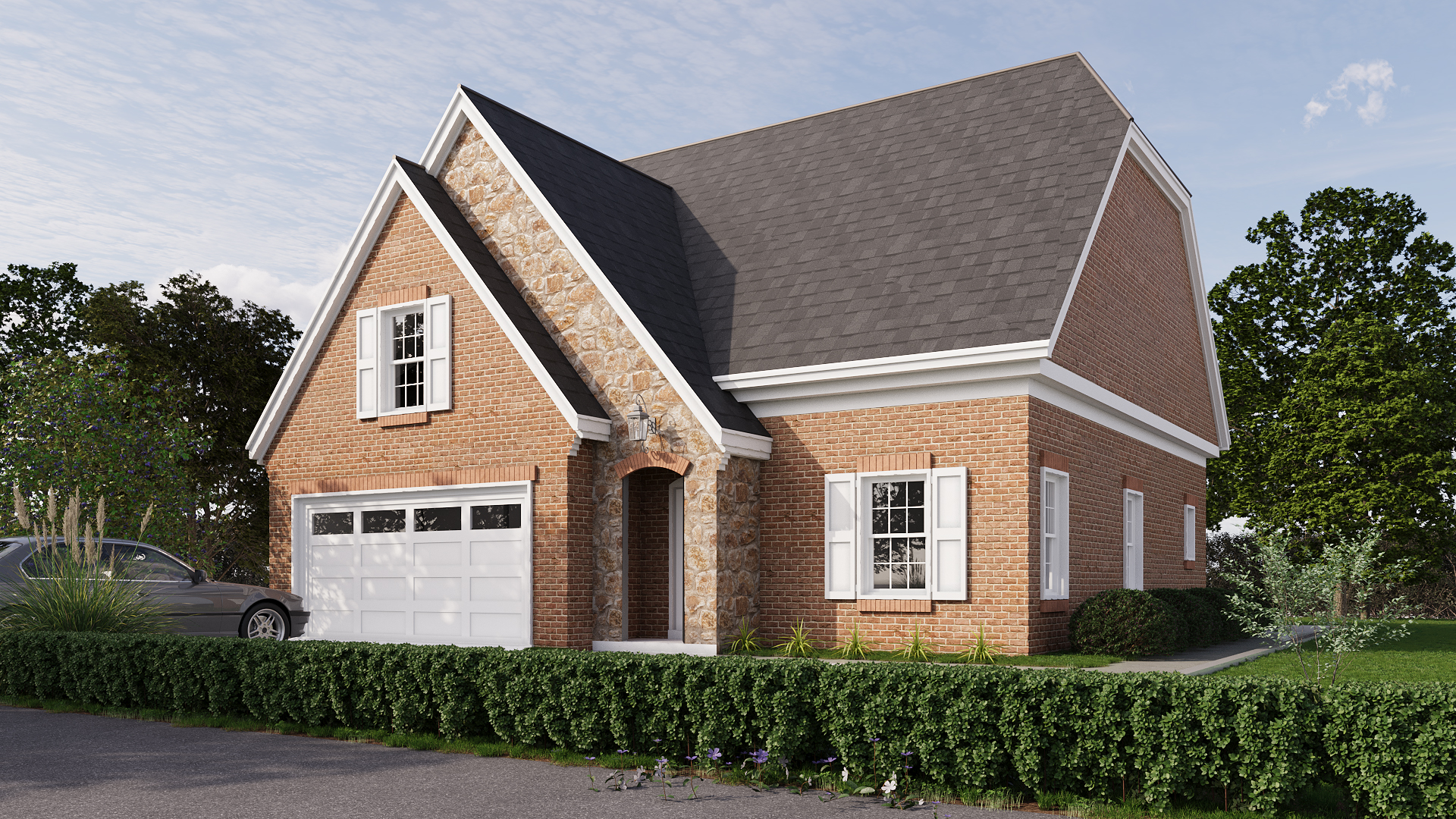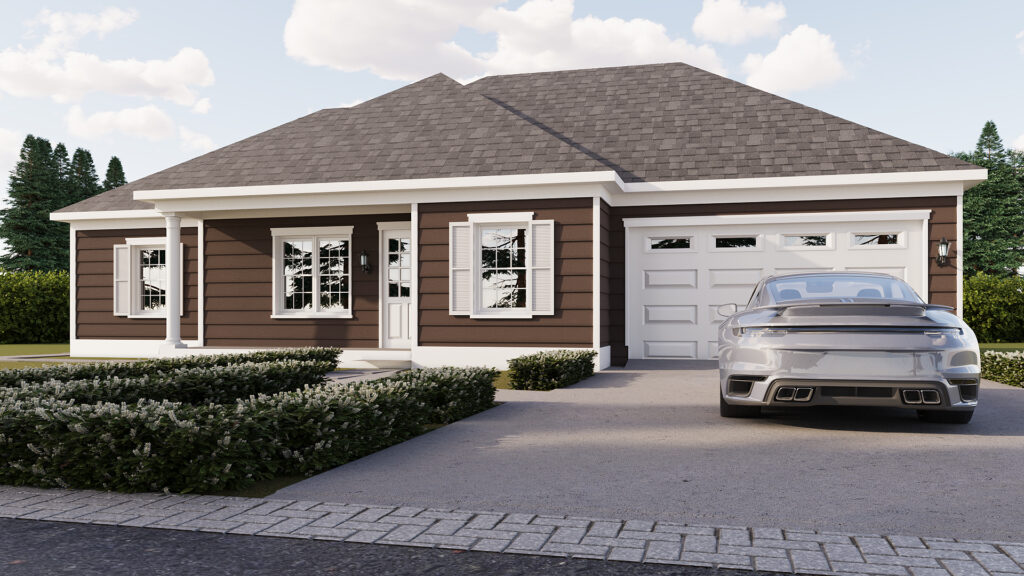
Why 3D Renderings Are Essential for Marketing Luxury Real Estate
In the competitive world of luxury real estate, where every detail counts, 3D renderings have emerged as a game-changer. For agents, developers, and architects, these hyper-realistic visualizations offer a compelling way to showcase high-end properties, allowing potential buyers to experience the space before it’s even built. Unlike traditional photography or floor plans, 3D renderings provide immersive, accurate, and engaging views of properties, capturing every nuance of luxury and refinement.
Here’s why 3D renderings have become essential in luxury real estate marketing:
1. Providing an Immersive Experience
Luxury properties are all about creating unique experiences, and 3D renderings allow prospective buyers to explore these spaces virtually. By visualizing interiors, exteriors, and amenities in detail, 3D renderings immerse potential buyers in the property’s ambiance, much like an in-person visit. From high ceilings and panoramic views to carefully selected finishes and exclusive amenities, every aspect is captured with precision, creating a lasting impression on buyers.
3D renderings can be taken a step further with virtual tours, allowing prospective buyers to “walk through” the property, view specific rooms from different angles, and feel the flow of the space. This level of engagement, which isn’t possible with standard photography or videos, lets buyers form an emotional connection with the property, even if they’re viewing it from afar.
2. Enhancing Emotional Connection with Detailed Realism
For luxury real estate, presentation and perception are crucial. High-quality 3D renderings can replicate every feature of a property, from custom cabinetry and imported stone to natural lighting and sophisticated architectural details. This level of realism allows buyers to see how their lifestyle can integrate with the space.
Whether it’s showcasing a lavish marble foyer or the ambiance of a warmly lit dining area, 3D rendering enables the expression of mood, texture, and luxury with precision. These realistic renderings can help establish an emotional connection by showing potential buyers what their future home could feel like. Visualizing how they might host gatherings in a grand living room or enjoy quiet mornings on a private terrace makes the property more relatable and desirable.
3. Marketing to an International Clientele
In luxury real estate, international buyers are a significant part of the target market. These clients may not have the flexibility to view properties in person, especially during the early stages of their search. High-quality 3D renderings break down geographical barriers, allowing buyers from across the globe to explore properties virtually. Whether a buyer is in New York, London, or Dubai, they can experience the same immersive, detailed tour of a luxury property without needing to visit in person.
By providing 3D visualizations, real estate marketers make it convenient for international buyers to evaluate multiple properties from a distance. This not only broadens the reach of marketing efforts but also shortens the decision-making timeline, as buyers can more easily narrow down their choices before considering an in-person visit.

4. Accelerating Decision-Making with Customization Options
Luxury buyers often desire a personalized home that reflects their individual taste and lifestyle. 3D renderings can display various design options for a single property, such as alternative color schemes, furniture arrangements, and finishes, giving buyers the opportunity to customize the space in ways that suit their preferences.
For example, if a buyer wants to see a living room in different styles – modern, classic, or minimalist – a 3D rendering can illustrate each option seamlessly. This flexibility speeds up the decision-making process, as clients can make more informed choices about the property’s potential. By empowering buyers to visualize their ideal home, developers can cater to client expectations and drive stronger interest in the property.
5. Highlighting Unique Features of Luxury Properties
Luxury properties often boast unique features such as high-end kitchens, wine cellars, home theaters, spas, and rooftop gardens. These details are difficult to capture fully with traditional photographs but can be highlighted effectively with 3D renderings. By presenting each feature in the best light, 3D renderings communicate the distinctive aspects of a property that set it apart from others.
For example, a 3D rendering of a luxury penthouse may highlight the open-floor design, expansive windows overlooking the skyline, and the custom finishes that create an ambiance of exclusivity. By capturing these unique aspects in exquisite detail, renderings help showcase the value that luxury properties provide, justifying their premium price tags.
6. Bringing Pre-Construction Properties to Life
In luxury real estate, many properties are sold before construction is completed. 3D renderings make it possible to market these pre-construction properties with detailed and realistic visualizations of what the final product will look like. Potential buyers can explore fully furnished spaces, view room layouts, and experience design aesthetics before the building is even complete. This allows developers and agents to secure buyers early in the process, generating interest and commitment long before the project’s completion.
3D renderings are particularly advantageous in off-plan sales, as they help buyers imagine the end result and feel more confident about their investment. The level of detail and transparency offered by 3D renderings reassures buyers, even when purchasing a property that currently only exists on paper.
7. Showcasing the Surroundings and Community Amenities
Location and neighborhood amenities often play a key role in a luxury buyer’s decision. 3D renderings can integrate surrounding landscapes, city views, nearby facilities, and exclusive community amenities into the visualizations. These exterior views and local highlights give potential buyers a sense of the property’s location, lifestyle, and value.
For instance, 3D renderings can depict a penthouse’s proximity to upscale restaurants, cultural landmarks, or private parks. They can also show the views from different floors of the property, giving buyers a better sense of the neighborhood’s character and the property’s relationship to its environment. This adds depth to the property’s appeal, positioning it as not just a residence but a lifestyle choice.
8. Saving Time and Resources for Buyers and Agents Alike
With 3D renderings, real estate agents and developers can present properties in their best light without the need for extensive staging, touch-ups, or maintenance for photoshoots. Buyers benefit as well, as they can review multiple properties efficiently, comparing design details and layouts from the comfort of their current location.
This efficiency is especially valuable in luxury real estate, where buyers expect personalized, time-saving service. With high-quality 3D renderings, potential buyers can explore properties remotely, which can help narrow down choices before committing to an in-person visit. This means more targeted tours and faster transactions, benefiting both agents and clients.
Conclusion
In the high-stakes world of luxury real estate, 3D renderings are more than just a marketing tool they are a necessity. By providing immersive, detailed, and flexible visualizations, 3D renderings help showcase luxury properties with precision and style, enhancing the buying experience and expanding market reach. From helping international buyers explore properties remotely to accelerating decision-making with customization options, 3D renderings offer a wealth of benefits for real estate professionals and clients alike.
As the luxury real estate market continues to grow and evolve, leveraging 3D renderings can ensure that agents and developers stay ahead of the competition, offering potential buyers a unique, engaging way to experience and invest in their dream homes.


